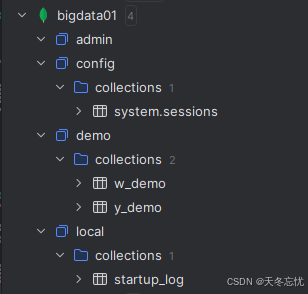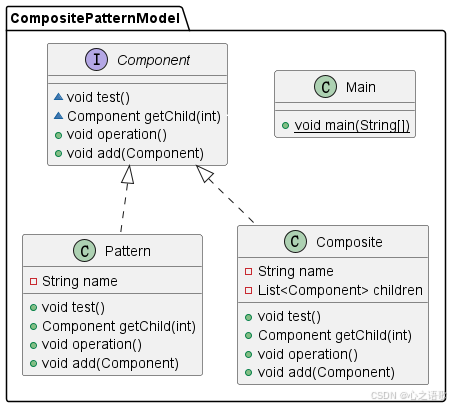文章目录
- 1、概念
- 1.1、创建表 account
- 1.2、id 自动创建 主键索引 primary
- 1.3、name 没有创建索引
- 2、产生死锁的必要条件
- 2.1、此时 name 没有创建 索引
- 3、如何处理死锁
- 3.1、方式1:等待,直到超时(innodb_lock_wait_timeout=50s)
- 3.2、方式2:使用 死锁 检测进行死锁处理
- 3.3、如何解决?
- 3.4、进一步的思路:
- 4、如何避免死锁
1、概念
两个事务都持有对方需要的锁,并且在等待对方释放,并且双方都不会释放自己的锁。
举例1:
| 事务1 | 事务2 | |
|---|---|---|
| 1 | start transaction; | start transaction; |
| 2 | update account set money=100 where id =1; | |
| 3 | update account set money=100 where id = 2; | |
| 4 | update account set money=200 where id=2; | |
| 5 | update account set money=200 where id =1; |
1.1、创建表 account
drop table if exists account;
create table account(
id int primary key AUTO_INCREMENT comment 'ID',
name varchar(10) comment '姓名',
money double(10,2) comment '余额'
) comment '账户表';
insert into account(name, money) VALUES ('A',2000), ('B',2000);
1.2、id 自动创建 主键索引 primary



mysql> select * from account;
+----+------+--------+
| id | name | money |
+----+------+--------+
| 1 | A | 100.00 |
| 2 | B | 200.00 |
+----+------+--------+
2 rows in set (0.00 sec)
举例2:
用户A给用户B转账100,在此同时,用户B也给用户A转账100。这个过程,可能导致死锁。
| 事务1 | 事务2 | |
|---|---|---|
| 1 | start transaction; | start transaction; |
| 2 | update account set money= money - 100 where name = ‘A’; | |
| 3 | update account set money= money - 100 where name = ‘B’; | |
| 4 | update account set money= money + 100 where name = ‘B’; | |
| 5 | update account set money= money + 100 where name = ‘A’; |
mysql> select * from account;
+----+------+---------+
| id | name | money |
+----+------+---------+
| 1 | A | 2000.00 |
| 2 | B | 2000.00 |
+----+------+---------+
2 rows in set (0.00 sec)
1.3、name 没有创建索引

因为name没有创建索引,所以此时行锁升级为表锁,此时 account表 被锁定,所以 update account set money= money - 100 where name = ‘B’;和update account set money= money + 100 where name = ‘A’;执行不成功,发生阻塞。
mysql> select * from account;
+----+------+---------+
| id | name | money |
+----+------+---------+
| 1 | A | 1900.00 |
| 2 | B | 2100.00 |
+----+------+---------+
2 rows in set (0.00 sec)

2、产生死锁的必要条件
- 两个或者两个以上事务
- 每个事务都已经持有锁并且申请新的锁
- 锁资源同时只能被同一个事务持有或者不兼容
- 事务之间因为持有锁和申请锁导致彼此循环等待
死锁的关键在于:两个(或以上)的Session加锁的顺序不一致。
| 事务1 | 事务2 | |
|---|---|---|
| 1 | start transaction; | start transaction; |
| 2 | update account set money = money - 100 where name = ‘A’; | |
| 3 | update account set money = money + 100 where name = ‘A’; | |
| 4 | update account set money = money + 100 where name = ‘B’; | |
| 5 | update account set money = money - 100 where name = ‘B’; |
此时不会发生死锁。
mysql> select * from account;
+----+------+---------+
| id | name | money |
+----+------+---------+
| 1 | A | 2000.00 |
| 2 | B | 2000.00 |
+----+------+---------+
2 rows in set (0.00 sec)
2.1、此时 name 没有创建 索引
因为name没有创建索引,所以此时行锁升级为表锁,此时 account表 被锁定,所以 update account set money = money + 100 where name = ‘A’;和update account set money = money - 100 where name = ‘B’;执行不成功,发生阻塞。

mysql> select * from account;
+----+------+---------+
| id | name | money |
+----+------+---------+
| 1 | A | 1900.00 |
| 2 | B | 2100.00 |
+----+------+---------+
2 rows in set (0.00 sec)3、如何处理死锁
3.1、方式1:等待,直到超时(innodb_lock_wait_timeout=50s)
mysql> show variables like 'innodb_lock_wait_timeout';
+--------------------------+-------+
| Variable_name | Value |
+--------------------------+-------+
| innodb_lock_wait_timeout | 50 |
+--------------------------+-------+
1 row in set (0.04 sec)
等待,直到超时(innodb_lock_wait_timeout=50s)。
即当两个事务互相等待时,当一个事务等待时间超过设置的阈值时,就将其 回滚,另外事务继续进行。
这种方法简单有效,在innodb中,参数 innodb_lock_wait_timeout 用来设置超时时间。
缺点:对于在线服务来说,这个等待时间往往是无法接受的。
那将此值修改短一些,比如 1s,0.1s 是否合适? 不合适,容易误伤到普通的锁等待。
3.2、方式2:使用 死锁 检测进行死锁处理
方式1 检测死锁太过被动,innodb还提供了 wait-for graph 算法 来主动进行死锁检测,每次加锁请求无法立即满足需要并进入等待时,wait-for graph 算法 都会被触发。
这是一种较为 主动的死锁检测机制 ,要求数据库保存 锁的信息链表 和 事务等待链表 两部分信息。

基于这两个信息,可以绘制 wait-for graph (等待图)

死锁检测的原理 是构建一个以事务为顶点、锁 为边的有向图,判断有向图是否存在环,存在既有死锁。
一旦检测到回路、有死锁,这时候 InnoDB 存储引擎 会选择 回滚undo量最小的事务,让其他事务继续执行(innodb_deadlock_detect=on 表示开启这个逻辑)。
缺点:每个新的被阻塞的线程,都要判断是不是由于自己的加入导致了死锁,这个操作时间复杂度是O(n)。如果100个并发线程同时更新同一行,意味着要检测100*100=1万次,1万个线程就会有1千万次检测。
3.3、如何解决?
- 方式1:关闭死锁检测,但意味着可能会出现大量的超时,会导致业务有损。
- 方式2:控制并发访问的数量。比如在中间件中实现对于相同行的更新,在进入引擎之前排队,这样在InnoDB内部就不会有大量的死锁检测工作。
3.4、进一步的思路:
可以考虑通过将一行改成逻辑上的多行来减少 锁冲突。比如,连锁超市账户总额的记录,可以考虑放到多条记录上。账户总额等于这多个记录的值的总和。
4、如何避免死锁
- 合理设计索引,使业务SQL尽可能通过索引定位更少的行,减少锁竞争。
- 调整业务逻辑SQL执行顺序,避免 update/delete 长时间持有锁的 SQL 在事务前面。
- 避免大事务,尽量将大事务拆成多个小事务来处理,小事务缩短锁定资源的时间,发生锁冲突的几率也更少。
- 在并发比较高的系统中,不要显示加锁,特别是是在事务里显示加锁。比如 select … for update 语句,如果是在事务运行了 start transaction 或设置了 autocommit 等于 0,那么就会锁定所查找到的记录。
- 降低隔离级别。如果业务允许,将隔离级别调低也是较好的选择,比如将隔离级别从 RR 调整为 RC,可以避免掉很多因为 gap 锁造成的死锁。



















